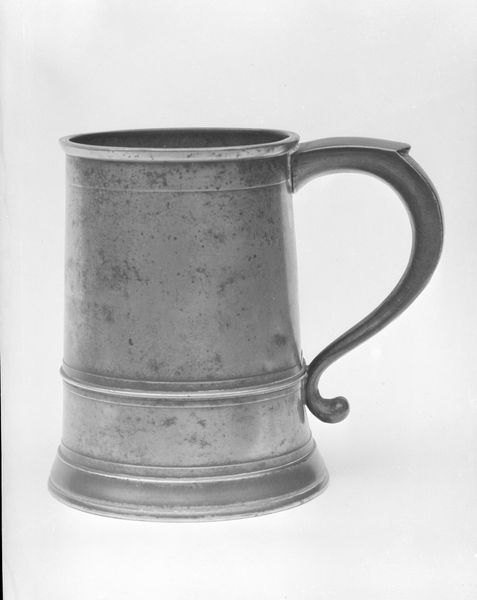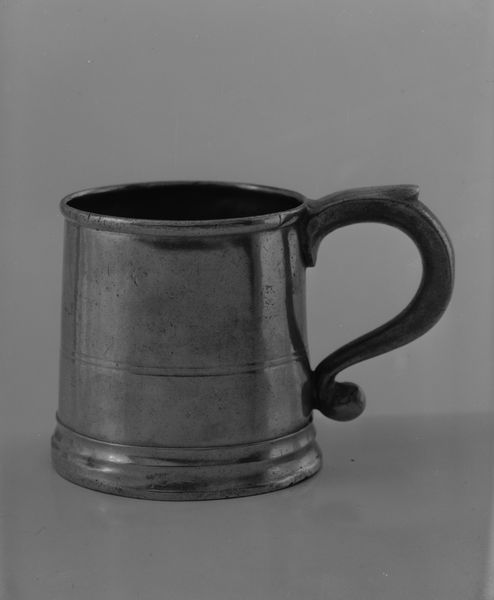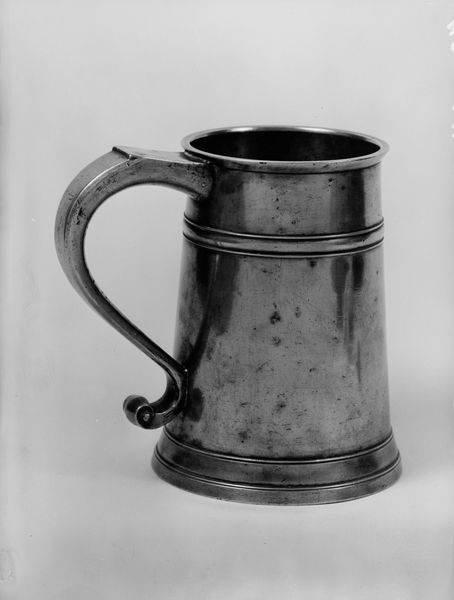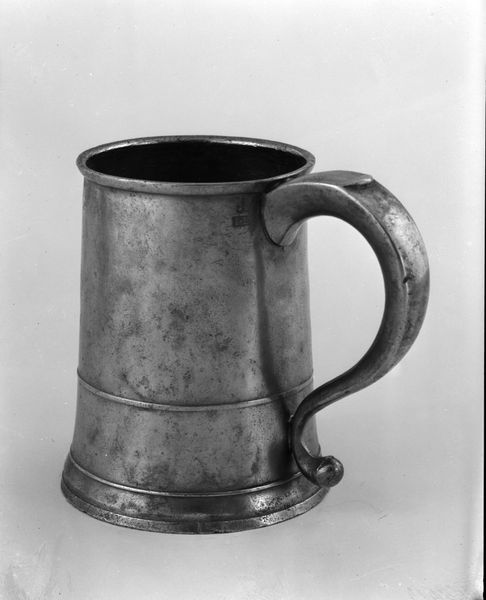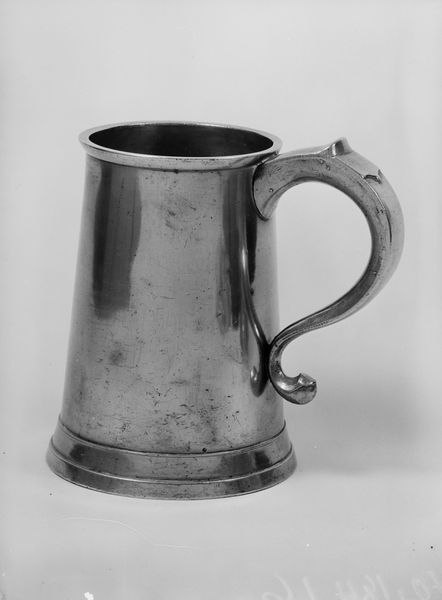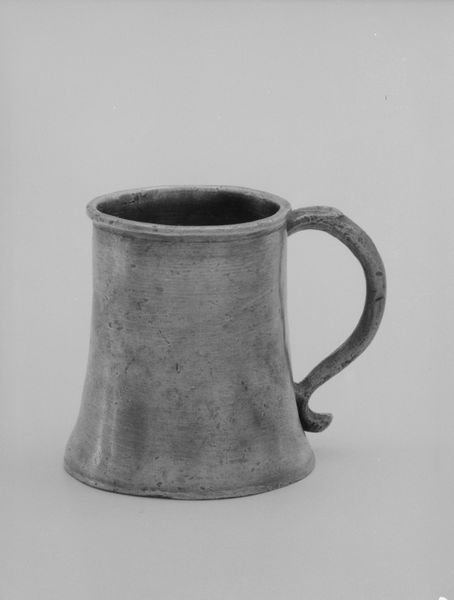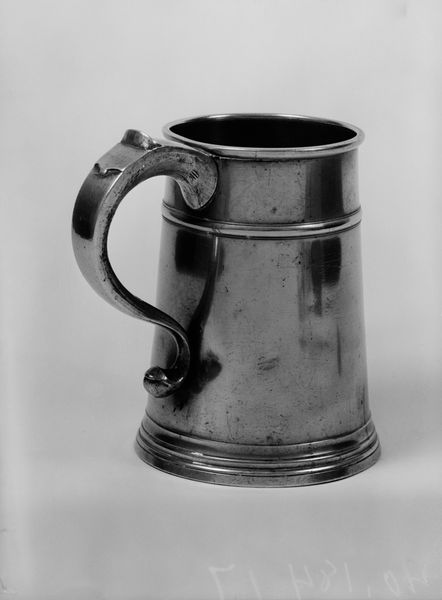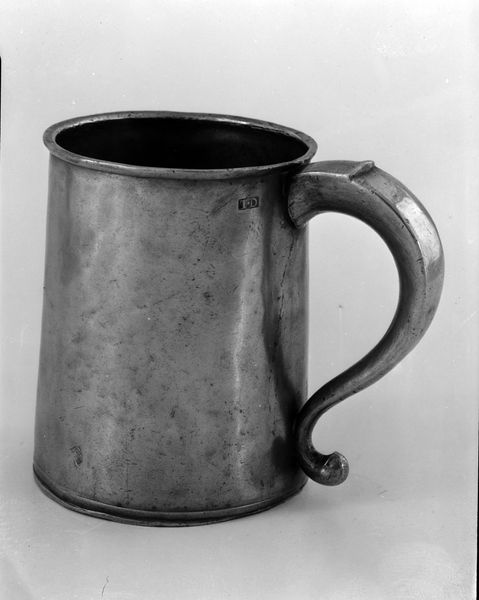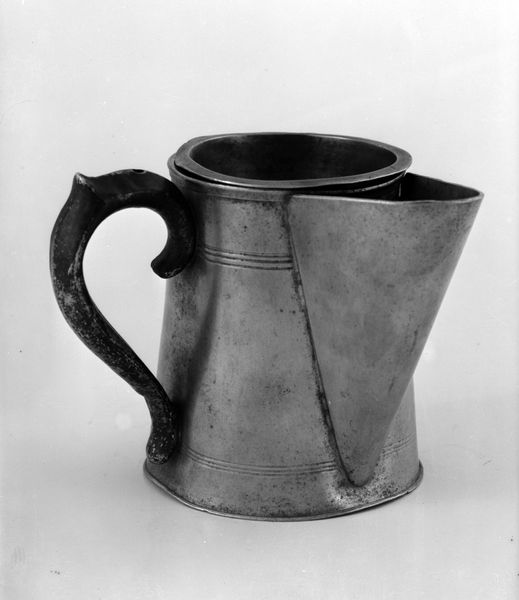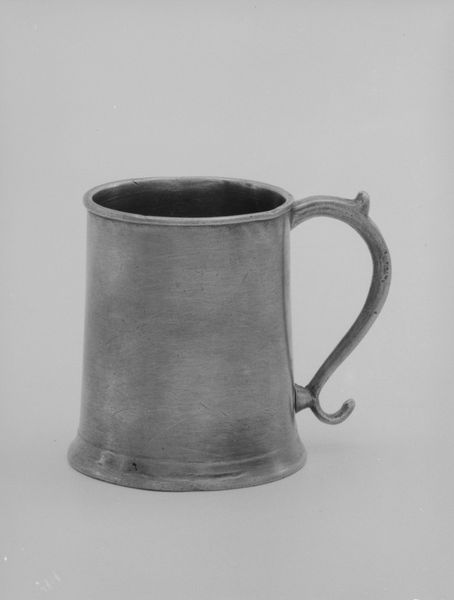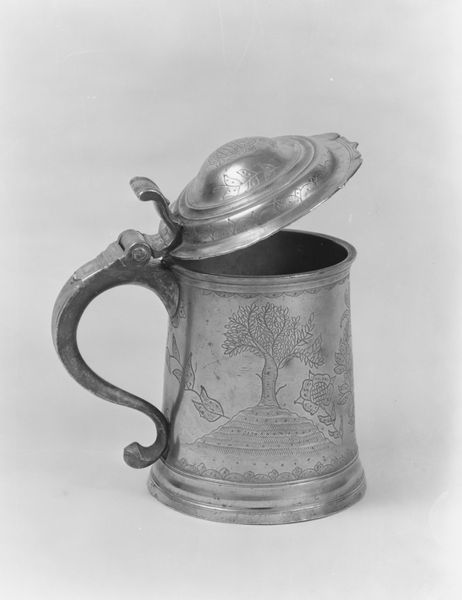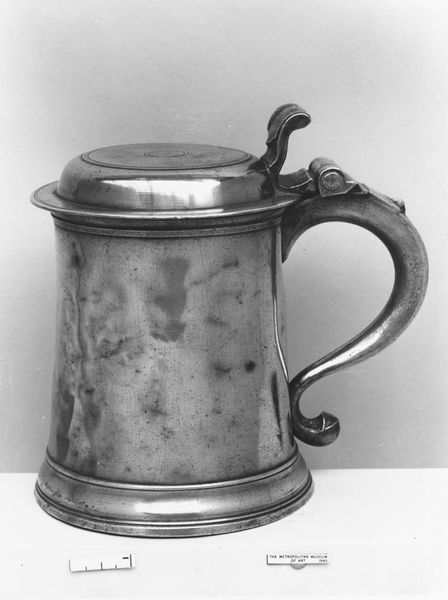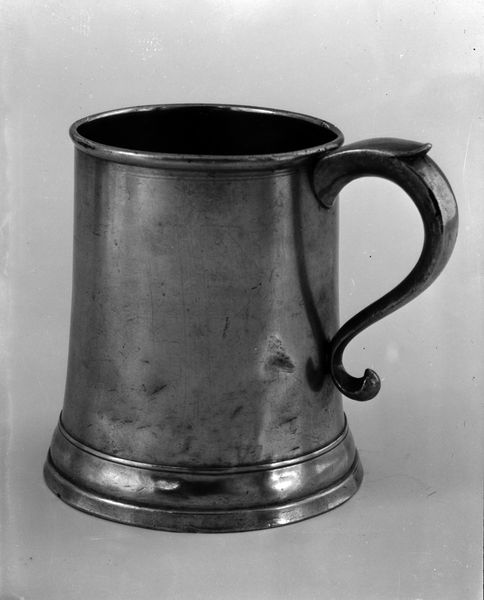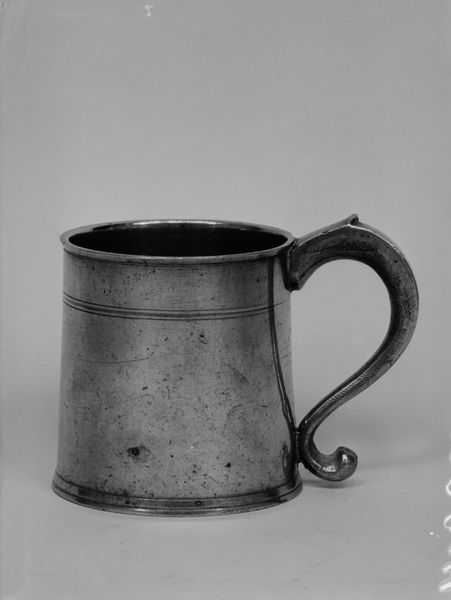
ceramic, sculpture
#
ceramic
#
stoneware
#
sculpture
#
black and white
Dimensions: H. 5 13/16 in. (14.8 cm)
Copyright: Public Domain
Editor: So here we have a stoneware mug made by Thomas Danforth Boardman, dating from around 1810 to 1850. Its simplicity almost makes it invisible, you know? I’m struck by how ordinary, how utilitarian, this object appears. How would you interpret such a common thing being in a museum? Curator: Well, its "ordinariness" is precisely what makes it fascinating. Think about the rise of the middle class in the early 19th century. Pieces like this were part of a shift toward domestic comfort and individual consumption. Did everyone have access to objects like these? Absolutely not. What stories do objects like this hold when considered through the lens of socioeconomic class? Editor: So, it’s less about the mug itself and more about what it represents socially? Curator: Exactly. This mug speaks to the social structures and aspirations of the time. Who was using this, and what were they drinking? Was it a signifier of status, or simply a tool? What kind of communities were built and fostered around the consumption enabled by such simple objects? Considering these aspects offers a peek into the past that grand historical narratives often overlook. Editor: It is kind of mind-blowing to realize how such a plain, mass-produced mug holds meaning, more meaning than what meets the eye! I think it is interesting to ask "what are objects that museums choose *not* to display?" Curator: That’s a very insightful consideration! The choices institutions make in terms of acquisitions and exhibitions are often revealing and indicative of shifting values, power structures, and societal biases over time. Thanks for the stimulating conversation.
Comments
No comments
Be the first to comment and join the conversation on the ultimate creative platform.
